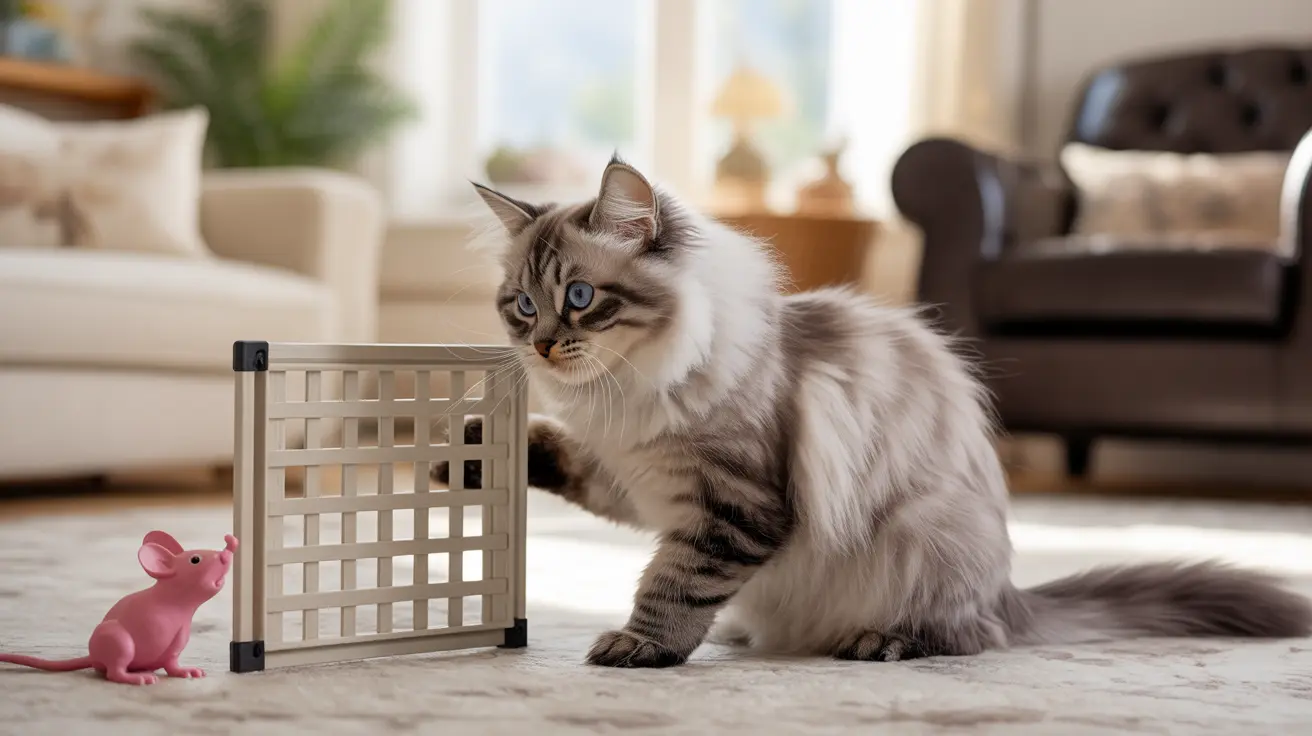Creating effective barriers to manage your cat's access within your home doesn't have to be complicated or expensive. DIY cat gates offer a practical, customizable solution that can be tailored to your specific needs and space requirements. Whether you're looking to protect certain areas of your home or create safe outdoor spaces, this comprehensive guide will walk you through various DIY cat gate options and how to build them.
From simple wire shelf barriers to sophisticated outdoor containment systems, we'll explore materials, construction techniques, and expert tips to help you create the perfect cat gate for your situation. Let's dive into everything you need to know about crafting effective, affordable cat barriers.
Essential Materials for DIY Cat Gates
Before starting your project, gathering the right materials is crucial for success. Here are the most effective options:
Wire Shelving Components
- Wire shelves (minimum 4 feet high)
- Heavy-duty zip ties
- Wall anchors and screws
- Basic tools (screwdriver, level, drill)
Vinyl Lattice Materials
- 4'x8' vinyl lattice panels
- Lattice caps and trim
- Mounting brackets
- Wood for framing (if needed)
Simple Wire Shelf Gate Construction
The wire shelf method is one of the most popular and cost-effective approaches to creating a DIY cat gate. Here's how to build one:
- Measure your doorway or opening
- Cut wire shelves to size if necessary
- Connect shelves vertically using zip ties
- Install mounting brackets
- Secure the gate to your doorframe
Advanced DIY Cat Gate Designs
Built-in Cat Door Options
For households with multiple pets or small children, incorporating a cat door into your gate design offers the perfect solution:
- Use sturdy wooden frames
- Install a cat flap at an appropriate height
- Add childproof latches if needed
- Consider clear panels for visibility
Outdoor Cat Barrier Systems
Creating safe outdoor spaces requires special consideration for weather resistance and escape prevention:
- Install mesh or netting at 35-degree angles
- Use UV-resistant materials
- Ensure proper ground anchoring
- Add roller bars at the top for extra security
Installation and Safety Tips
Proper installation is crucial for both safety and effectiveness:
- Ensure gates are at least 4 feet tall
- Check for gaps under and around the gate
- Test stability before leaving cats unsupervised
- Regular maintenance checks for wear and tear
Frequently Asked Questions
How can I build a simple and affordable DIY cat gate using wire shelving?
To build a wire shelf cat gate, connect three wire shelves vertically using zip ties. Measure your doorway first, cut shelves to size if needed, and secure them to the doorframe using appropriate mounting hardware. This method typically costs $25-40 and takes about an hour to complete.
What materials and tools do I need to create a custom-sized vinyl lattice cat gate?
You'll need vinyl lattice panels, lattice caps, screws, a saw for cutting, a drill, measuring tape, and mounting brackets. Optional materials include wood for framing and decorative trim. Basic tools like a screwdriver, level, and safety equipment are also necessary.
How do I install a DIY cat gate with a built-in cat door to allow feline access but block other pets or children?
Create a frame from wood or PVC pipe, then install a cat flap at an appropriate height (usually 6-8 inches from the bottom). Secure the frame with hinges on one side and a latch on the other. Use sturdy materials and ensure the cat door is properly sized for your pet.
What are effective design tips to make outdoor cat-proof fencing that prevents climbing and jumping escapes?
Install netting or mesh at a 35-degree inward angle at the fence top, extend barriers to at least 6 feet high, and consider adding roller bars at the top edge. Ensure all materials are weather-resistant and UV-stable, and check that ground anchoring prevents cats from squeezing underneath.
How can I create a removable or temporary DIY cat barrier that's easy to install and take down?
Use tension rods or removable mounting brackets with lightweight materials like mesh or netting. Self-adhesive hooks and Velcro straps can provide additional support while allowing easy removal. Ensure the barrier is stable when installed but can be quickly dismantled when needed.
Conclusion
DIY cat gates offer an excellent solution for managing your cat's access while maintaining your home's aesthetics and functionality. Whether you choose a simple wire shelf design or a more complex outdoor system, the key is selecting appropriate materials and ensuring proper installation. With these guidelines and tips, you can create effective, affordable barriers that keep your feline friend safe and secure.






